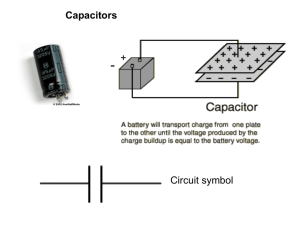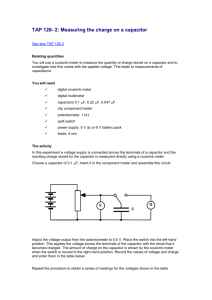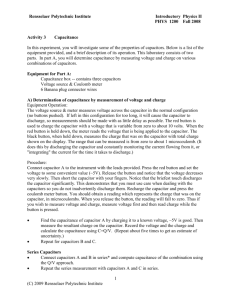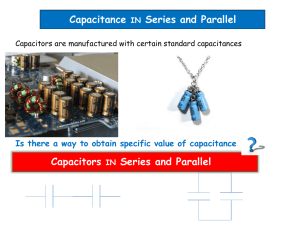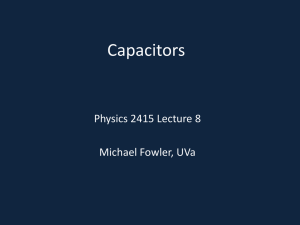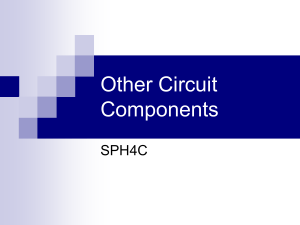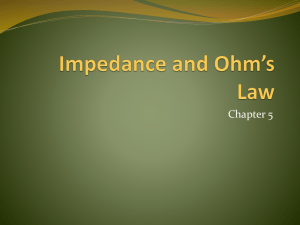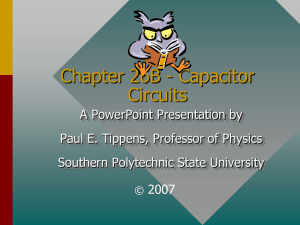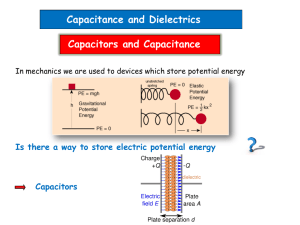Lifetime of HCPP Film Capacitor for Marx Modulator
advertisement
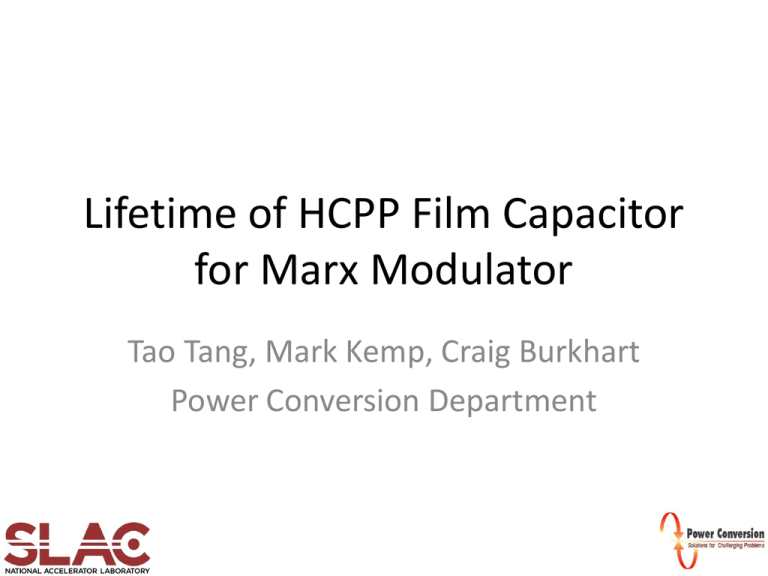
Lifetime of HCPP Film Capacitor for Marx Modulator Tao Tang, Mark Kemp, Craig Burkhart Power Conversion Department Outline • Background of ILC Marx Modulator • High Crystalline Poly-Propylene (HCPP) self healing film capacitor • Capacitor life time model (DC) • Voltage related lifetime change • Thermal related lifetime change • AC capacitor lifetime scaling • Image of failed capacitor films • Future work Marx Modulator • ILC Marx Modulator – – – – – – • Pulse Voltage: Voltage Regulation: Pulse Current: Pulse Length [flat-top]: Repetition Rate: Total # of RF Stations: 120 kV ±0.5% 140 A 1.6 ms 5 Hz 576 Current statues – Installed in ESB: summer 2009 – Operating with klystron: Sept. 2009 – Life time testing now : modulator ran 43 days last year (April 2010- April 2011) • Capacitance degradation – RF power start to droop after a few months running – Degradation depends on depth of discharge – Residual voltage on capacitors (as high as 1kV) – 105hr theoretical life time103 hr HCPP Film Capacitor • High Crystalline PolyPropylene (HCPP) film capacitor – High energy density – Used in industry applications Capacitor electrode • DC: storage capacitor, filter capacitor • Deep discharge: defibrillator • Marx application – Compact system High energy density – In new operation region • Discharge 20%-40% • Like DC operation(?) Film(4.8µm) metallization 2-4Å Solder point Capacitor Life Time Model (DC) • Lifetime scaling relationship model widely used in literature for film capacitors – Suggested by manufacture – Definite end-of-life >5% capacitance change r hs • Design and testing for P2 capacitors Scaling Relationship experimental data 2000 Accelerated Lifetime (hr) – • Other fail mechanism after >5% change Formula: LsVsexp coef . La exp 2 Va • DC voltage & Temperature 2500 – Optimize capacitor design – Testing at elevated voltage stress (standard method used in industry) 20% droop – Conclusion: 264V/um for >10^5 hr life time – P1 capacitor(40% droop): 194V/um 1500 1000 500 0 390 400 410 420 430 440 Accelerated Film Field Stress(V/µm) 450 460 Voltage Related Life Time Change • Voltage related shorten lifetime – Residual voltage induced uneven voltage distribution • Improvement – Replace end-of-life capacitors – Add balancing elements: balancing resistors • Results: capacitance decrease at same rate Thermal Related Life Time Change • Average power – Very small – P1 Capacitor thermal design is very conservative – Change repetition rate did not help • Instantaneous heating – Manufacture defect on edge connection of large capacitors is sensitive to instantaneous power – Testing of small capacitors same degradation rate Capacitor Life Time Model(AC) • AC capacitor fail model – Anodic oxidation of Al metallization(Corona related) – AC voltage (ie. Depth of discharge) related – DC field can not initiate or sustain the corrosion process • Relation of life time and depth of discharge – ESB operation data (I^2 t also changed accordingly) – Controlled environment (same I^2 t) at B015 Percent Capacitance Change per Million Shoots (%/mil. shot) 1 0.1 0.01 0.001 15 20 25 30 35 Droop (delta V/ Vmax) 40 45 Image of the Film • Scanned image of films – Only on one polarity of the film (cathode or anode) – Almost perfect round • Optical microscope image – Can not see pin hole • SEM – Film charging – Material analysis: can not find Al in metalized area Future Work • Solution for current issue – Decrease depth of discharge to 20% – Shorter pulse width (short term) – Double capacitance (long term) • Understanding the failure mechanism – Find the relation of AC voltage to life time (increase with AC voltage or sharp change after certain threshold) – Find the threshold field strength for this failing mechanism
![Sample_hold[1]](http://s2.studylib.net/store/data/005360237_1-66a09447be9ffd6ace4f3f67c2fef5c7-300x300.png)
